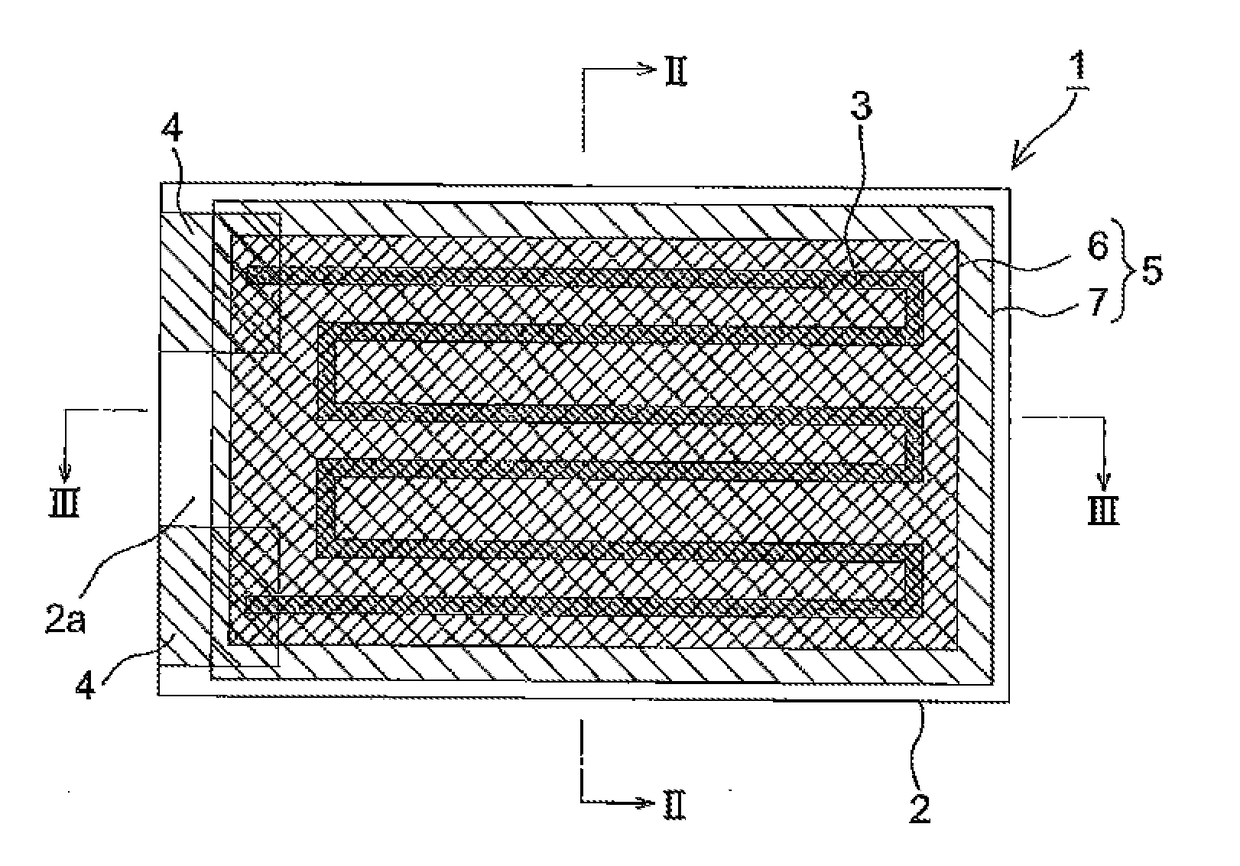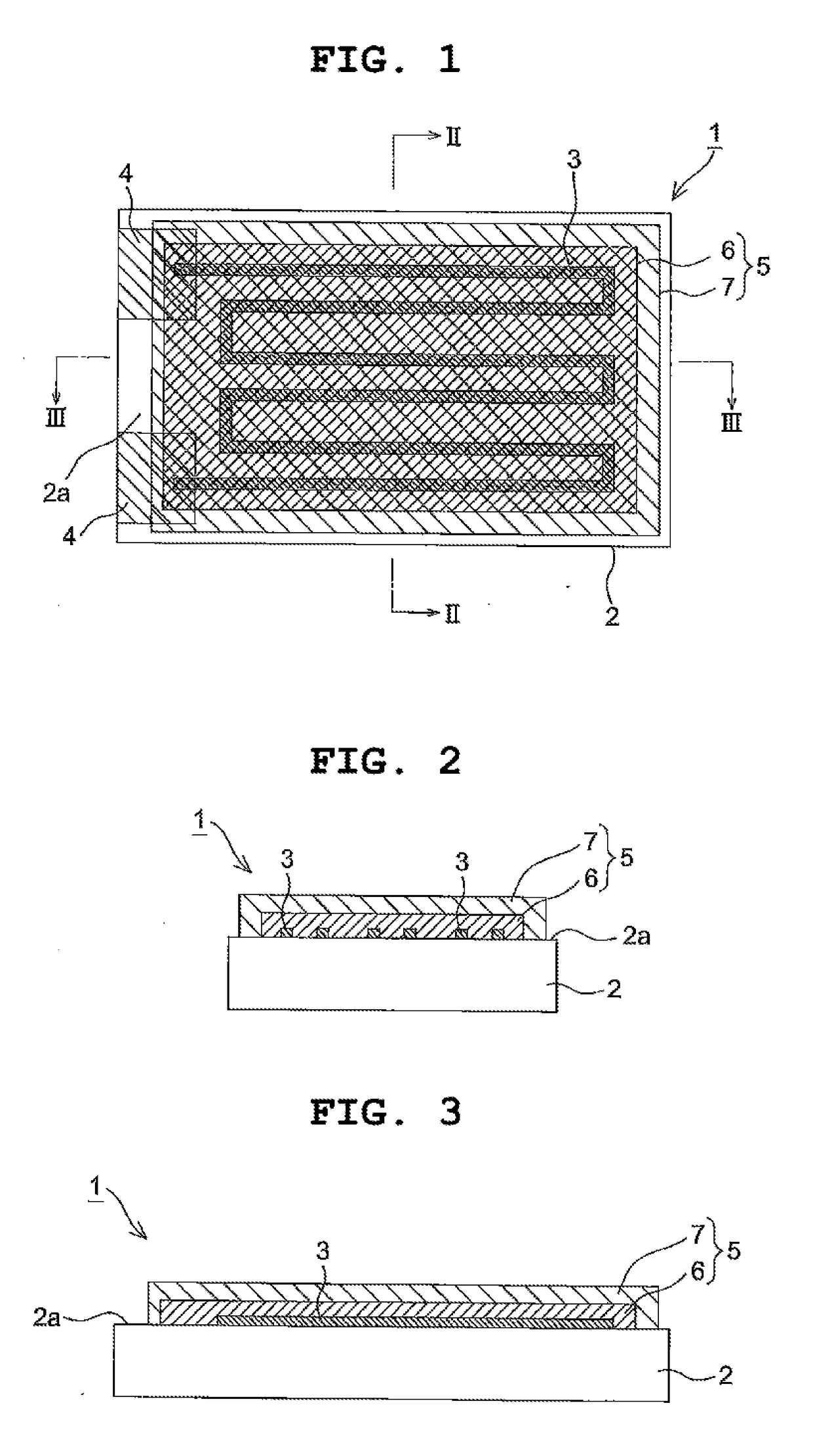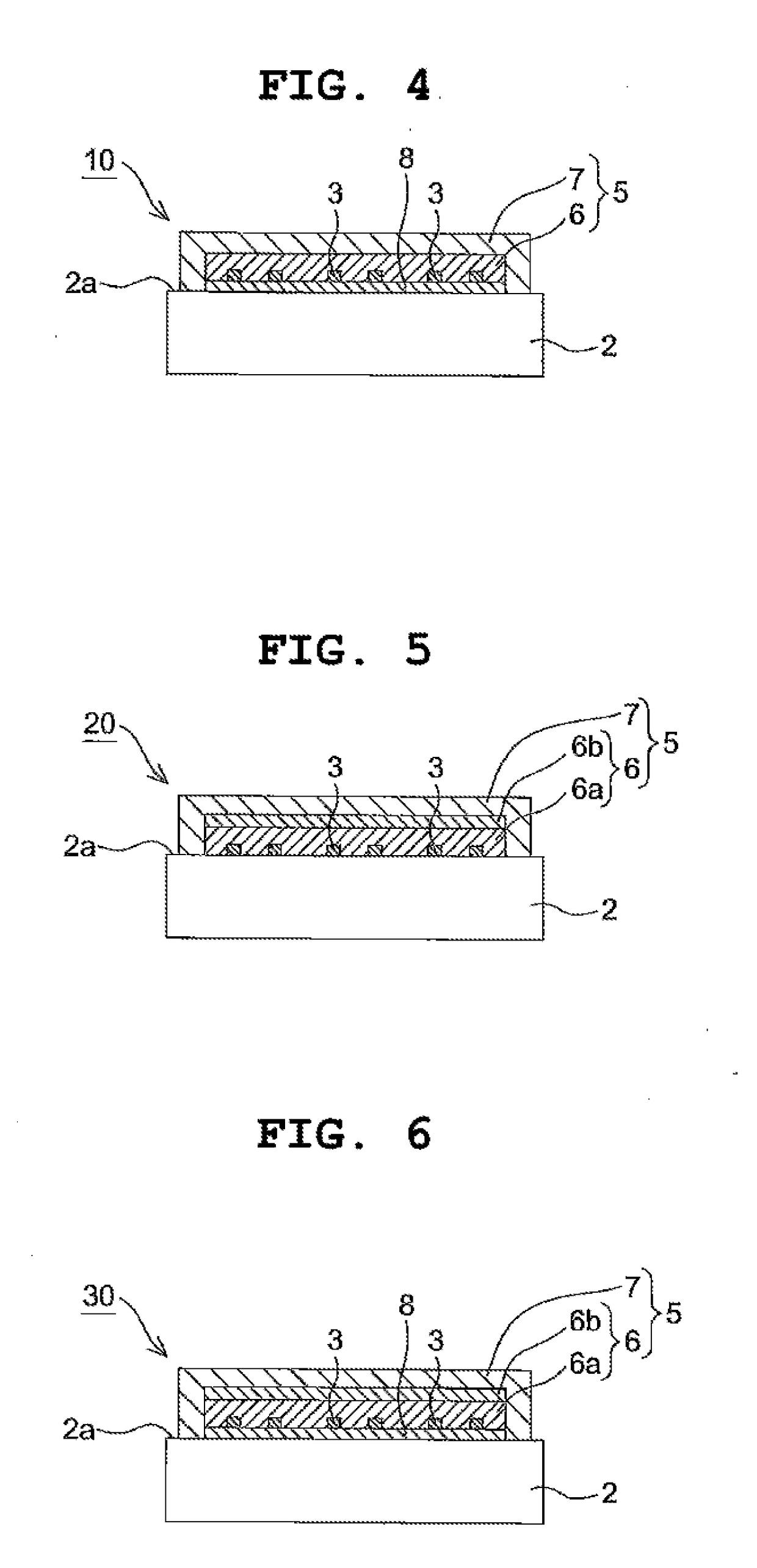Temperature Sensor Element
a technology of temperature sensor and element, applied in the field of high temperature sensor element, can solve the problems of ceramic layer likely to crack, ceramic layer unlikely to crack, ceramic layer unlikely to crack, etc., and achieve the effect of preventing drift of resistance value or change of tcr
- Summary
- Abstract
- Description
- Claims
- Application Information
AI Technical Summary
Benefits of technology
Problems solved by technology
Method used
Image
Examples
first embodiment
[0029]Embodiments of the invention will be described with reference to the drawings. Incidentally, in the following description, portions the same or regarded as the same in each of the embodiments will be referred to by the same signs correspondingly and respectively, and duplicated description thereof will be omitted appropriately. As shown in FIGS. 1 to 3, a temperature sensor element 1 according to a first embodiment of the invention is configured to include a ceramic substrate 2, a resistance pattern 3, a pair of electrodes 4, a protective film layer 5, and not-shown lead wires. The ceramic substrate 2 is shaped like a rectangular parallelepiped. The resistance pattern 3 having a meander shape is formed on a main surface (front surface) 2a of the ceramic substrate 2. The pair of electrodes 4 are formed on the main surface 2a of the ceramic substrate 2 so as to be connected to opposite end portions of the resistance pattern 3. The protective film layer 5 covers the resistance pa...
second embodiment
[0043]FIG. 4 is a sectional view of a temperature sensor element 10 according to a second embodiment of the invention. In FIG. 4, portions corresponding to those in FIG. 2 will be referred to by the same signs respectively.
[0044]The temperature sensor element 10 according to the second embodiment is basically the same in configuration as the temperature sensor element 1 according to the first embodiment except that a platinum resistance pattern 3 is not formed on a main surface 2a of a ceramic substrate 2 but a surface smoothening layer 8 containing alumina as a main component and 2 to 30 vol % of platinum is sandwiched between the platinum resistance pattern 3 and the main surface 2a of the ceramic substrate 2.
[0045]That is, in the temperature sensor element 10 shown in FIG. 4, the surface smoothening layer 8 containing alumina as the main component and platinum (whose content is 2 to 30 vol %) is formed on the main surface 2a of the ceramic substrate 2, and the resistance pattern ...
third embodiment
[0047]FIG. 5 is a sectional view of a temperature sensor element 20 according to a third embodiment of the invention. In FIG. 5, portions corresponding to those in FIG. 2 will be referred to by the same signs respectively.
[0048]The temperature sensor element 20 according to the third embodiment is basically the same in configuration as the temperature sensor element 1 according to the first embodiment except that, of an overcoat layer 7 and a trap layer 6 constituting a protective film layer 5, the trap layer 6 is formed into a two-layer structure including a lower layer 6a and an upper layer 6b. Here, alumina is used as a main component in both the lower layer 6a and the upper layer 6b. The lower layer 6a making contact with the platinum resistance pattern 3 is smaller in content of platinum than the upper layer 6b and contains 0 to 10 vol % of platinum. The upper layer 6b contains 2 to 30 vol % of platinum. That is, when, for example, the content of platinum in the lower layer 6a ...
PUM
 Login to View More
Login to View More Abstract
Description
Claims
Application Information
 Login to View More
Login to View More - R&D
- Intellectual Property
- Life Sciences
- Materials
- Tech Scout
- Unparalleled Data Quality
- Higher Quality Content
- 60% Fewer Hallucinations
Browse by: Latest US Patents, China's latest patents, Technical Efficacy Thesaurus, Application Domain, Technology Topic, Popular Technical Reports.
© 2025 PatSnap. All rights reserved.Legal|Privacy policy|Modern Slavery Act Transparency Statement|Sitemap|About US| Contact US: help@patsnap.com



